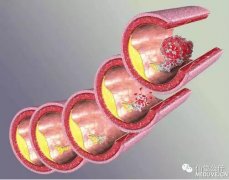日前,在eLife杂志上,Mayo诊所的研究人员发现,靶标衰老细胞可以在自然衰老的小鼠中减少干细胞功能障碍和代谢疾病(包括糖尿病)。在预防和逆转老年病变方面迈出了第一步。
随着年龄的增长,我们体内的衰老细胞越来越多。人们普遍认为,这些细胞影响了老年人的身体健康,与多种老年病有关。
“我们使用特异性药物成功靶标了小鼠的衰老细胞。这意味着我们将有望干涉老年人的衰老细胞,阻止它们释放引起糖尿病和干细胞故障的毒性蛋白,”文章的资深作者,Mayo诊所的James Kirkland博士说。
胰岛素分泌缺乏或功能障碍会导致糖代谢紊乱,进而引起以血糖升高为特征的代谢性疾病——糖尿病。糖尿病在当今社会越来越普遍,随着人们生活水平的提高,这种疾病的发病率还在不断攀升。现在全世界约有三亿六千六百万的二型糖尿病患者,这一数字预计会在2030年上升到五亿五千二百万。
研究人员发现,衰老的人类脂肪细胞会释放activin A,这种蛋白会损害脂肪干细胞和脂肪组织的功能。在老年小鼠的血液和脂肪组织中,activin A水平也的确比较高。他们用JAK(Janus kinase)抑制剂治疗老年小鼠(相当于80岁老人),成功减少了activin A的含量,部分逆转了脂肪组织的胰岛素抵抗。脂肪组织的胰岛素抵抗会促使老年人患上糖尿病。
进一步研究表明,清除早衰小鼠模型的衰老细胞,可以降低activin A的水平,增加提升胰岛素敏感性和减少糖尿病的蛋白。这与JAK抑制剂对自然衰老小鼠的效果是一致的。
“在接受治疗后,小鼠的葡萄糖和胰岛素耐受测试得到了更好的结果,这些测试可以表明糖尿病的严重性,”Dr. Kirkland说。“我们的工作说明,靶标衰老细胞或者它们的产物,有望延缓、预防、缓解或治疗老年人的干细胞功能紊乱和代谢疾病。”
原文链接:Targeting senescent cells enhances adipogenesis and metabolic function in old age
原文摘要:Senescent cells accumulate in fat with aging. We previously found genetic clearance of senescent cells from progeroid INK-ATTAC mice prevents lipodystrophy. Here we show that primary human senescent fat progenitors secrete activin A and directly inhibit adipogenesis in non-senescent progenitors. Blocking activin A partially restored lipid accumulation and expression of key adipogenic markers in differentiating progenitors exposed to senescent cells. Mouse fat tissue activin A increased with aging. Clearing senescent cells from 18-month-old naturally-aged INK-ATTAC mice reduced circulating activin A, blunted fat loss, and enhanced adipogenic transcription factor expression within 3 weeks. JAK inhibitor suppressed senescent cell activin A production and blunted senescent cell-mediated inhibition of adipogenesis. Eight weeks-treatment with ruxolitinib, an FDA-approved JAK1/2 inhibitor, reduced circulating activin A, preserved fat mass, reduced lipotoxicity, and increased insulin sensitivity in 22-month-old mice. Our study indicates targeting senescent cells or their products may alleviate age-related dysfunction of progenitors, adipose tissue, and metabolism.



